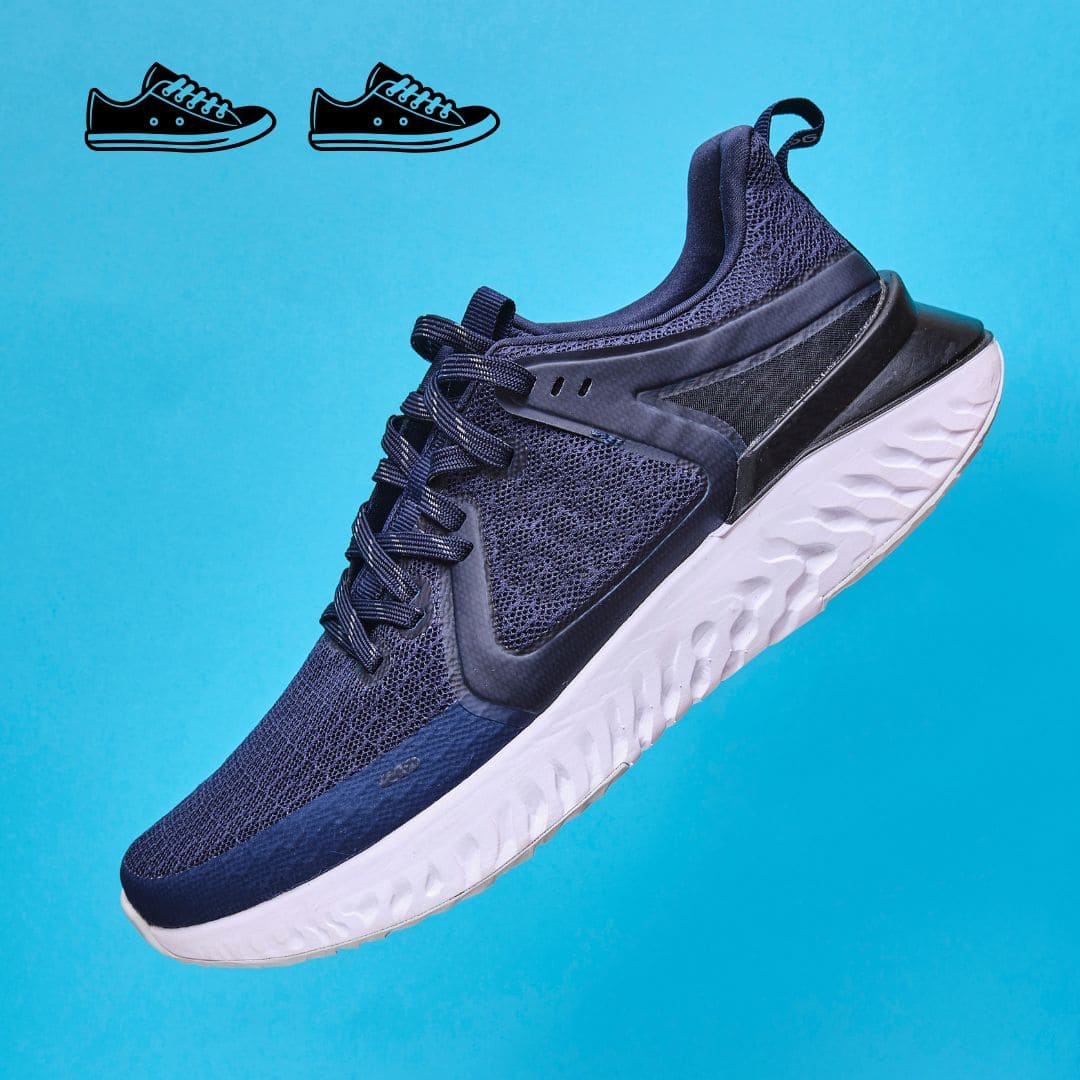
How Tall Are Sneaker Shoes? A Complete Effective Guide to Sneaker Heights and Styles
Sneakers have become far more than just athletic footwear—they are a cultural symbol, a fashion statement, and even a collectible item. But one question often asked by sneaker enthusiasts, athletes, and casual wearers alike is: “How tall are sneaker shoes?”
The answer may seem simple at first glance, but sneaker height isn’t universal. Depending on the design, purpose, and brand, sneakers can vary in height dramatically—from minimalist running shoes with ultra-thin soles to chunky platform sneakers that can add several inches to your stature.
In this article, we’ll dive deep into sneaker height, exploring average measurements, differences between sneaker categories, design factors that influence height, and why it matters in fashion, sports, and even health.
Introduction to Sneaker Height
When most people think of sneakers, they imagine comfort, style, and versatility. But very few stop to consider how tall sneakers actually are.
Sneaker height refers to two different aspects:
Sole Height (Outsole + Midsole): How thick the bottom of the sneaker is, usually adding to your body height.
Collar Height (Upper): How far up the ankle the sneaker extends—low-top, mid-top, or high-top.
So, when you ask “How tall are sneakers?” the answer depends on which part you’re talking about: the height you gain from wearing them, or the height of the shoe’s structure.
The Anatomy of Sneaker Shoes
To understand height variations, it’s important to break down the sneaker’s parts:
Outsole: The rubber base that touches the ground. Thickness can vary from 2 mm in minimalist sneakers to 1.5 inches in platforms.
Midsole: Provides cushioning (EVA foam, Air units, Boost foam, etc.). Adds noticeable height.
Insole: A thin layer inside the shoe that contributes slightly to comfort and height.
Heel Stack: The vertical thickness at the heel.
Toe Stack: The vertical thickness at the toe.
Collar/Upper: How far the sneaker extends above your ankle.
All of these contribute to the perceived and functional height of sneakers.
Average Sneaker Height: The General Range
On average:
Most sneakers add 1–1.5 inches (2.5–4 cm) in height.
Lightweight running sneakers often add only 0.75–1 inch.
Classic basketball shoes add 1.25–1.75 inches.
Chunky lifestyle sneakers and platforms can add 2–4 inches or more.
So, if you’re 5’9” barefoot, sneakers can make you appear anywhere from 5’10” to 6’1”, depending on the model.
Low-Top, Mid-Top, and High-Top Sneakers
Sneaker height is also classified by collar design:
Low-Tops
Cut below the ankle
Light and flexible
Add less bulk visually
Example: Nike Air Force 1 Low, Adidas Stan Smith
Mid-Tops
Sit slightly above the ankle
Offer balance between mobility and support
Example: Jordan 1 Mid, Nike Blazer Mid
High-Tops
Extend above the ankle
Provide stability, especially in sports
Can appear “taller” even if the sole height is the same
Example: Converse Chuck Taylor High, Jordan 1 High
Heel-to-Toe Drop: The Subtle Height Difference
Sneakers don’t just vary in total height—they also differ in the heel-to-toe drop, which is the difference between the heel stack height and the toe stack height.
Running sneakers: Usually 8–12 mm drop (higher heel).
Minimalist sneakers: 0–4 mm drop (flat).
Basketball sneakers: Often 10–15 mm drop for explosive jumps.
This subtle difference can affect posture, running stride, and even your perceived height.
Thick-Soled and Platform Sneakers
In recent years, fashion has embraced chunky sneakers—also called “dad shoes” or platform sneakers. These models deliberately exaggerate height.
Examples:
Fila Disruptor II: Adds 2+ inches.
Balenciaga Triple S: Adds nearly 3 inches.
Alexander McQueen Oversized Sneaker: About 2 inches.
For many, these are a stylish way to gain height without heels.
Running Shoes vs. Basketball Sneakers vs. Lifestyle Sneakers
Different sneaker categories serve different purposes, which influences height:
Running Shoes: Prioritize cushioning and energy return. Stack height is moderate (1–1.5 inches). Example: Nike ZoomX Invincible Run.
Basketball Sneakers: Taller collars for ankle support and thicker soles for jumps. Usually 1.5–2 inches tall. Example: Air Jordan 11.
Lifestyle Sneakers: More fashion-forward, often chunkier. Can range from slim to exaggeratedly tall. Example: Yeezy 700, Air Force 1.
The Role of Cushioning in Height
Cushioning technologies can dramatically affect sneaker height:
Nike Air Max Units: Visible air bubbles add bulk and height.
Adidas Boost Foam: Thick, bouncy cushioning.
Hoka One One Shoes: Ultra-thick midsoles, often 2+ inches.
Minimalist Shoes (e.g., VivoBarefoot): Almost no cushioning, less than 0.5 inch.
The comfort-height tradeoff plays a huge role in sneaker design.
Popular Sneaker Models and Their Heights
Here are examples of well-known sneakers and how tall they are:
Nike Air Force 1: ~1.25 inches
Converse Chuck Taylor: ~1 inch
Adidas Ultraboost: ~1.3 inches
Air Jordan 1: ~1.5 inches
Yeezy 700: ~1.75 inches
Hoka Bondi 8: ~2.3 inches
Balenciaga Triple S: ~2.8 inches
Fashion and Sneaker Height: A Style Perspective
Height has always played a role in fashion. Sneakers that add a couple of inches can boost confidence, change body proportions, and enhance outfits.
Slim sneakers pair well with suits and skinny jeans.
Chunky sneakers complement streetwear and oversized fits.
Platform sneakers are often styled for bold, fashion-forward looks.

Health Considerations of Sneaker Height
Sneaker height affects biomechanics:
Too much cushioning may reduce ground feel and stability.
Too little cushioning can strain joints if you’re not used to it.
High drops can put stress on the knees.
Low drops may stress the calves if transitioned too quickly.
For most people, a moderate sneaker height (1–1.5 inches) is ideal for daily wear.
Sneaker Height in Sports Performance
Athletes care deeply about sneaker height:
Basketball players benefit from thick, cushioned soles for jumps.
Runners need stack height that balances energy return and stability.
Skaters often prefer flat, thin sneakers like Vans for board feel.
Performance dictates sneaker design, which in turn dictates height.
Do Taller Sneakers Make You Look Taller?
Yes—but subtly.
A sneaker that adds 1.5–2 inches may make you noticeably taller.
Chunky platforms can exaggerate this effect.
High-top collars don’t add to physical height but can create the illusion of bulk and stature.
The Evolution of Sneaker Height in History
1917: Converse Chuck Taylor—thin sole, minimal height.
1970s: Nike running shoes—slightly thicker soles.
1980s–90s: Basketball boom—Air Jordans raised sneaker height.
2010s: Chunky sneaker fashion—Fila, Balenciaga, Yeezy brought extreme height.
2020s: Mix of minimalist barefoot shoes and oversized platforms.
History shows sneaker height trends move in cycles.
Customization and Height Enhancers
Some people actively seek extra height from sneakers. Options include:
Height-increasing insoles (lifts): Add 1–3 inches.
Custom sneakers: Some brands specialize in taller soles.
DIY modifications: Thick laces, high socks, and styling tricks enhance appearance.
Fun Facts About Sneaker Heights
The tallest sneakers in production are platform styles exceeding 4 inches.
NBA players often wear sneakers that make them appear 2 inches taller on the court.
Sneakerheads sometimes measure stack height the way runners measure heel drop.
The Air Max 720 has one of Nike’s tallest Air units, at nearly 1.5 inches thick.
Conclusion
So, how tall are sneaker shoes? The answer depends on the style, purpose, and design. On average, sneakers add about 1–1.5 inches to your height, but certain models can push you up by 3–4 inches or more.
Whether you choose sleek low-tops, cushioned running shoes, or chunky fashion platforms, sneaker height is more than just numbers—it’s about performance, comfort, and personal style.
Sneakers are more than footwear; they’re identity, culture, and self-expression. And yes, they can make you taller, even if just a little.
